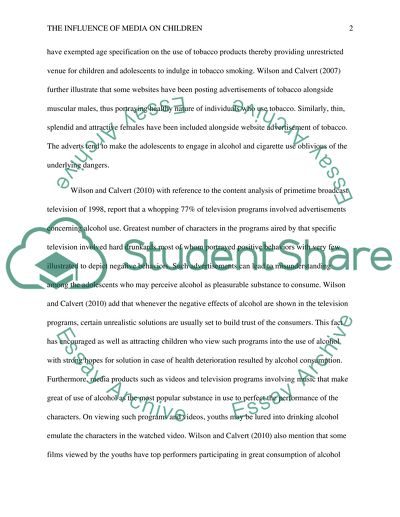Cite this document
(“Influence of Media on Children Research Paper Example | Topics and Well Written Essays - 1500 words”, n.d.)
Influence of Media on Children Research Paper Example | Topics and Well Written Essays - 1500 words. Retrieved from https://studentshare.org/psychology/1439616-the-influence-of-media-on-children
Influence of Media on Children Research Paper Example | Topics and Well Written Essays - 1500 words. Retrieved from https://studentshare.org/psychology/1439616-the-influence-of-media-on-children
(Influence of Media on Children Research Paper Example | Topics and Well Written Essays - 1500 Words)
Influence of Media on Children Research Paper Example | Topics and Well Written Essays - 1500 Words. https://studentshare.org/psychology/1439616-the-influence-of-media-on-children.
Influence of Media on Children Research Paper Example | Topics and Well Written Essays - 1500 Words. https://studentshare.org/psychology/1439616-the-influence-of-media-on-children.
“Influence of Media on Children Research Paper Example | Topics and Well Written Essays - 1500 Words”, n.d. https://studentshare.org/psychology/1439616-the-influence-of-media-on-children.


